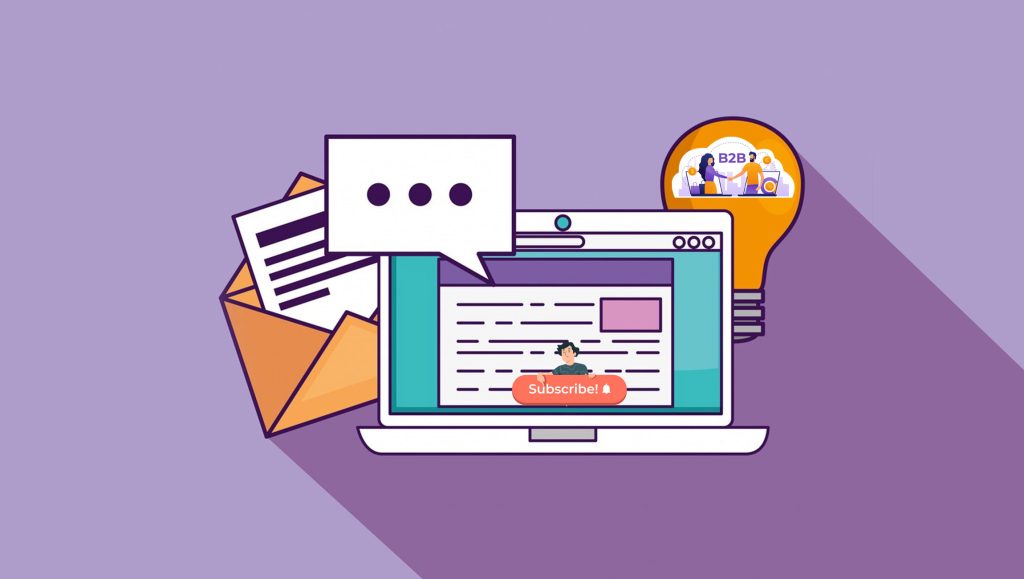**The primary author of this article is Vaishnavi Vaidya
_________
Why do you need a compelling CTA?
Crafting a compelling call to action (CTA) is akin to delivering the final, persuasive flourish in a captivating speech. Just as a well-crafted conclusion can prompt listeners to act decisively, a powerful CTA should spur viewers to take immediate and specific action.
(CTAs) are essential components of business communication for several compelling reasons:
- Drives Conversions: CTAs act as compelling invitations that motivate prospective customers to engage in particular actions, such as completing a purchase, subscribing to a newsletter, or seeking further information. By guiding individuals towards these desired actions, CTAs play a pivotal role in converting leads into customers and driving revenue.
- Increases Engagement: CTAs can help businesses foster deeper engagement with their audience by encouraging interaction with content or marketing materials. Whether it’s inviting users to comment on a social media post, participate in a survey, or explore additional resources, CTAs facilitate meaningful engagement that strengthens the relationship between businesses and their audience.
- Guides User Behavior: In a digital landscape inundated with information and options, CTAs serve as navigational signposts that guide users towards the next steps. By providing clear directives on what action to take next, CTAs streamline the user experience and reduce friction, making it easier for individuals to progress along the customer journey.
- Measures Effectiveness: Incorporating CTAs into marketing campaigns, websites, and other communication channels enables businesses to track and measure the effectiveness of their efforts. By monitoring metrics such as click-through rates, conversion rates, and engagement levels associated with CTAs, businesses can gain valuable insights into the performance of their campaigns and make data-driven optimizations.
- Facilitates Decision-Making: CTAs play a crucial role in facilitating decision-making processes by presenting individuals with compelling opportunities to act. Whether it’s prompting a purchase decision or encouraging users to subscribe to a service, CTAs provide the final push that nudges individuals towards making informed choices.
- Maximizes ROI: Effective CTAs can significantly impact the return on investment (ROI) of marketing initiatives by driving desired actions and outcomes. By optimizing CTAs for clarity, relevance, and persuasiveness, businesses can maximize the impact of their marketing efforts and achieve a higher ROI on their investments.
Read More: SalesTechStar Interview with Ram Menon, Founder and CEO at Avaamo
What makes a powerful CTA?
A powerful CTA (call to action) is like the closing line of a persuasive speech; it should prompt viewers to take the desired action immediately. Here are some key ingredients that make a CTA powerful:
Clarity and Specificity:
- Action verbs: Start with strong verbs that leave no room for doubt about what the user should do, like “Download,” “Subscribe,” or “Contact Us.”
- Specific outcome: Clearly state what the user will gain by clicking, like “Get a free ebook” or “Start your free trial.” Avoid generic CTAs like “Learn More.”
Urgency and scarcity:
- Create a sense of time pressure: Use phrases like “limited-time offer” or “only 5 spots left” to encourage immediate action.
- Highlight limited availability: Mention limited quantities or exclusive offers to incentivize clicking.
Personalization and Relevance:
- Tailor the CTA to your audience: Use language and phrasing that resonate with their specific needs and interests.
- Personalize when possible: Address the user by name or company name for a more impactful touch.
Visual Appeal and Design:
- Use contrasting colors: Make your CTA stand out on the page with a color that grabs attention.
- Clear and readable font: Ensure the CTA text is easy to read, even on small screens.
- Button design: Choose a button style that complements the overall design and matches the desired action (e.g., rounded for softer calls, sharp for bolder ones).
Emotional Connection:
- Tap into relevant emotions: Use words that evoke desire, curiosity, or fear of missing out (FOMO), depending on your message.
- Highlight the benefits: Emphasize how the action will improve their lives or solve their problems.
Testing and Optimization:
- Don’t assume the best: A/B test different CTAs with your audience to see which performs better.
- Continuously refine: Analyze data and adapt your CTAs based on user behavior and results.
Bonus Tip:
- Use psychological triggers: Scarcity, social proof, and the bandwagon effect can subconsciously influence users to click.
Formats for B2B CTA:
There’s no single “typical” format for B2B CTAs, as the best approach depends heavily on your specific audience, goals, and context. However, some common elements and formats often perform well in B2B settings:
Format:
- Buttons: Still a popular choice, especially for clear and direct actions. Use contrasting colors and clear text to make them stand out.
- Text links: Can be effective for embedding within content or offering multiple options. Ensure they’re visually distinct from regular text.
- Banners: Useful for highlighting special offers or announcements. Keep them concise and visually appealing.
- Interactive elements: Can be engaging for specific actions, like requesting a demo or starting a personalized quiz.
Content:
- Action-oriented verbs: Use strong verbs like “schedule,” “request,” “start,” or “download.”
- Specificity matters: Be clear about what the prospect will gain by clicking, like “Get a Free Consultation” or “Download Your Industry Report.”
- Benefits-driven: Highlight the value proposition and how it solves their pain points.
- Personalization, when possible: Use the company name or industry terminology relevant to your audience.
- Social proof: Include testimonials, case studies, or data to build trust and credibility.
- Urgency (optional): Use scarcity tactics or limited-time offers strategically to encourage immediate action.
Here are some examples of typical B2B CTA formats:
- For early-stage prospects: “Download our Free B2B Lead Generation Guide” (text link within content)
- For mid-stage prospects: “Schedule a Free Consultation to Discuss Your Needs” (button on a landing page)
- For late-stage prospects: “Start Your Free Trial Today” (banner with limited-time offer)
Things to avoid when crafting a good CTA:
Crafting compelling CTAs is undoubtedly crucial, yet steering clear of common missteps holds equal importance. Here, we outline three prevalent pitfalls to sidestep:
- Avoid Linking in Initial Cold Emails: Resist the urge to include links in your first cold email. While links aren’t inherently problematic, they can trigger spam filters, jeopardizing email deliverability. Instead, initiate the conversation with a low-key approach, inviting leads to express interest before sharing any links.
- Refrain from directly linking Calendly: Although tempting for its convenience, embedding your Calendly link can come across as overly assertive. Respect your prospects’ autonomy by first gauging their interest in scheduling a meeting. Moreover, consider the user experience, as Calendly links may appear cumbersome on mobile devices, potentially deterring engagement. Opt for a simpler approach, such as offering a “yes/no” option to initiate scheduling.
- Limit the number of CTAs: Multiple CTAs within an email can confuse recipients and dilute your primary message. Instead of inundating prospects with various options, streamline your approach by focusing on one clear and concise CTA. This singular directive directs the recipient’s attention and enhances the likelihood of prompt action.
For instance, compare the effectiveness of these two approaches:
Certainly! Here are alternative examples of CTAs:
Example 1:
– “Excited to learn more about our innovative solutions? Let’s connect for a live demonstration tailored to your needs or dive into our comprehensive product guide.”
Example 2:
– “Ready to explore how our services can benefit your business? Let’s set up a consultation on Thursday at 11 a.m. EST to discuss your specific requirements and objectives.”
While the first example offers two potential actions, the second presents a single, straightforward CTA, guiding the recipient toward a clear next step. By adhering to this principle of simplicity and focus, you can optimize the impact of your CTAs and drive desired outcomes effectively.
By incorporating these elements, you can craft CTAs that are clear, compelling, and effective in driving desired actions from your audience. Remember, the best CTA is the one that resonates with your specific audience and motivates them to take the next step.
Read More: Direct Mail for SDRs: A Comprehensive Guide





















